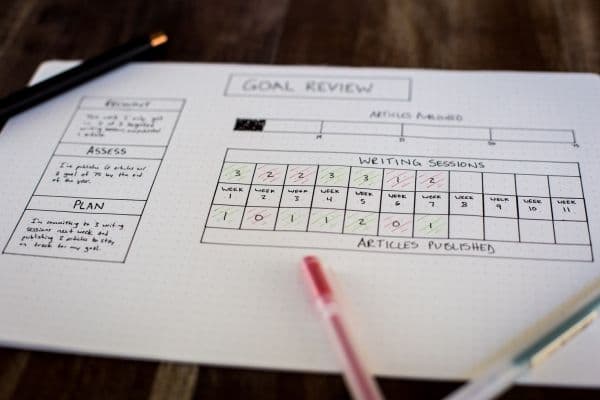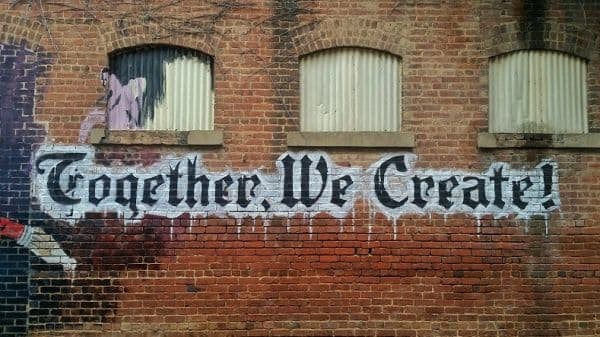Introducing Predictive Scoring, Edit with Prompt, and AI-Powered Resize
The Brief Team
Jul 8, 2025 - 4 min read
Are you an agency? Scale your team's work and impact with The Agency Package.

Online collaboration has become a buzzword for most brands, specialists, and psychologists. That's mainly because creative directors and design managers must create a safe environment that enhances the team's creative collaboration.
In the last few years, workspaces were redesigned to encourage creative collaboration.
We see increasing numbers of organizations investing in online collaboration tools and martech while aligning their people and processes to achieve long-term digital success through efficient collaboration.
One thing is clear.
We're not talking about offline creative collaboration but about online collaboration, The Brief being a cloud-based all-in-one ad design automation platform created for teams of all sizes.
We see a significant shift in workflows once companies understand the need for diversity in their communication and that innovative collaboration flourishes when they give up their well-established processes instead of restricting fresh perspectives.
From this point of view, startups are in an envied creative position, being free from the traditional "boxes to be ticked" processes.
However, collaboration is essential in organizations, SMBs, or startups and has more to do with introducing the right talent to the right online collaboration tools.
Creative collaboration is an active process where people combine their skills, ideas, and resources to develop new and innovative solutions. This type of collaboration can occur online, using digital tools and platforms to help with communication, idea generation, and project execution. This eliminates geographical barriers and encourages people from different backgrounds to work together, sharing their unique talents and perspectives. This collaboration can occur across various creative disciplines such as design, writing, music, filmmaking, and more. Essential components of online creative collaboration include:
In this article, we’re analyzing whether collaboration is more than an empty cliche.
The principles of creative collaboration are essential guidelines that govern the collaborative efforts of individuals or groups in generating innovative ideas and realizing creative projects.
Creative collaboration involves several guiding principles that help teams work together effectively to generate innovative ideas and bring them to life:
By adhering to these principles, teams can cultivate a culture of creativity, collaboration, and innovation that leads to the successful realization of creative projects and goals.
Every piece of creative work, whether it's a blog article, landing page, video, social media or display ad, requires creative collaboration.
This means that you have to work alongside other creative minds. Whilst the old saying “two heads are better than one” applies in a creative process, “too many cooks spoil the broth” can also become a reality.
Let’s look at some practical steps that’ll help you answer the question of how to collaborate in a way that will help your team achieve all of its goals.
Throughout my professional experience, I worked with small companies, startups and big organizations.
In small companies, I frequently noticed the common “freedom” of making up rules as they go, which would inevitably lead to chaos and unpredictability.
On the other hand, big organizations remain tied up in the politics of budgets, payment procedures, and governance workflows, being weak in adapting and keeping pace with the rapidly changing digital landscape.
The truth is somewhere in the middle. Collaboration thrives when there is an openness to embrace new practices and thinking, but also when there are rules and leaders.
It’s easy to fall into the hierarchy trap and set rules that will only drive ideas to please the superiors rather than truly creative ones.

Your team members should have similar levels within the hierarchy with clearly defined roles and play by the ground rules while the team leader is not losing the focus on the expected outcome.
This will help them keep the focus on the bigger picture while setting expectations for the team’s performance.
Regarding the rules, imagine being part of an NBA team without knowing the rules at all. You don’t know what you’re supposed to do with the ball and why everyone is screaming at you.
You can’t help your team win. It’s the same with successful creative collaboration within a team.
Every team member needs to understand the specific vocabulary (creative brief, brand guidelines), rules (checklists, plannings, weekly meetings, sprints), and goals (awareness, traffic, revenue).
When everyone’s playing the same game, things flow naturally.
Effective collaboration isn’t just about bringing together a group of creative minds, with different skill sets, views, and values.
Diversity encourages questions and debates but creates room for criticism.
Make all team members understand from the very beginning that there's no such thing as a dumb question. They all have different communication styles so they have to adapt in order to understand each other’s points of view.
Don’t just teach them. Show them, lead by example and model that integrity you want your team to follow. Rely on others but take a stand when necessary and hold yourself and your team accountable.
Forget competitiveness and shape a relationship based on mutual respect. When something is not working, try and communicate why it’s not working and guide the team members into finding how to fix it.
This is going to help your work evolve while your teammates will learn.
The very definition of collaboration is “when a group of people come together and contribute their expertise for the benefit of a shared objective”.
In my opinion, this is the most important step in empowering a creative collaboration.

Establish a clear “why” among your fellow collaborators and creators, set clear objectives, goals and expectations. Once you know where you need to get, half of the problem is solved.
All you need to do is to define the steps to get there.
In our marketing team, we’re using the creative brief concept. This structure works for us whether it’s a PPC campaign, a long-term editorial one, or releasing a new feature. It helps us bring all the teams on the same page and sets the boundaries for the brand.
The structure is focused around:
As I was saying in the very beginning, the right talent has to meet the right tools.
A study conducted by MIT Sloan Management Review research initiative in collaboration with Deloitte Digital found that nearly 90% of digitally maturing organizations are integrating their digital strategy with the company’s overall strategy.
Their managers are adequately preparing for the industry disruptions they anticipate arising from digital trends.
Big brands have well established creators behind them, most of them freelancers from different continents and time zones. They work with advertising agencies, influencers, micro-influencers and development teams.
Having digital tools that streamline workflows and creative collaboration is essential, as is sharing the work in progress and ideas super-often. And not just for big teams, for small ones too.
There are tons of listicles written about tools that help marketers, designers, advertisers, and developers work together efficiently.
As a project manager, you need to do your homework. Conduct your research, ask for trials, read reviews but most importantly, listen to your team’s feedback.
Here at The Brief, we’re using G Suite for communication, Trello for project management, Zeplin for product design collaboration, Jira as a software collaboration tool, and of course The Brief as a creative collaboration tool for ads design, social media posts, covers, stories, and all sorts of marketing needs.
The benefits of creative collaboration are manifold. Firstly, it fosters diverse ideas and perspectives, leading to innovative solutions to problems. By bringing together individuals with varied backgrounds, expertise, and experiences, creative collaboration enables the synthesis of different viewpoints, sparking creativity and generating unique approaches.

Collaboration tools are meant to overcome the limitations that phone calls and emails bring. We’re still using emails and calls but bringing collaborative tools into our workflow means that any member of the team or working group can join an ongoing project and be up-to-speed right away.
The use of email alone can lead team members to easily lose perspective.
Through creative collaboration, managers don’t pick on people, but people pick topics.
A copywriter living in Romania is as engaged as the creative director located in the US, while both of them are bouncing ideas on a global branding project.
The geographical location is not a concern anymore because you can find talent anywhere in the world. Moreover, as other team members give real-time feedback, contributions could come from unexpected places.
It’s all about speed nowadays and, for a business, delivering something innovative before others do is an imperative competitive advantage.
As Jeff Rayport stated in an article back in 2011 for the MIT Technology Review:
“Good ideas happen faster when the organization is awake 24 hours a day.”
When you have open-minded people around the globe working for a shared common goal, you can validate ideas to pursue quicker and faster than ever before.
One way to provide collaborative feedback is to give suggestions and point out areas of improvement in real-time. Tools such as ProofHub come with annotation and mark-up tools to provide you seamless feedback that works both ways.
We all know that a state of the art product or idea is nothing without visibility. You need to promote it so that others adopt it, change behaviors or buy into it.
Collaborating on creative projects attracts natural connections and visibility while expanding your social circle of connections that will make things happen.
Creative collaboration is not a new concept. Technology-based platforms designed for collaboration were first developed in the late 80s.
Right now, we are just living the dream while connecting, conversing, sharing, and interacting socially online with a common business goal.
Does your organization have a recipe for successful creative collaboration? Let us know in the comments section.
7 days free on us
Let's put these insights into action. Build, scale, and automate campaigns with AI-powered workflows.
The Brief Team
Jul 8, 2025 - 4 min read
Derya Yildirim
Oct 24, 2024 - 10 min read